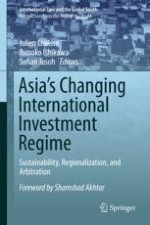2017 | OriginalPaper | Buchkapitel
Breaking the Market Dominance of ICSID? An Assessment of the Likelihood of Institutional Competition, Especially from Asia, in the Near Future
verfasst von : Andrea K. Bjorklund, Bryan H. Druzin
Erschienen in: Asia's Changing International Investment Regime
Verlag: Springer Singapore
Aktivieren Sie unsere intelligente Suche, um passende Fachinhalte oder Patente zu finden.
Wählen Sie Textabschnitte aus um mit Künstlicher Intelligenz passenden Patente zu finden. powered by
Markieren Sie Textabschnitte, um KI-gestützt weitere passende Inhalte zu finden. powered by
